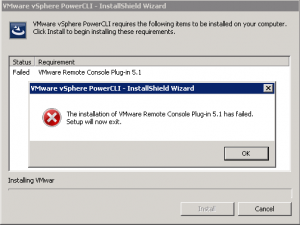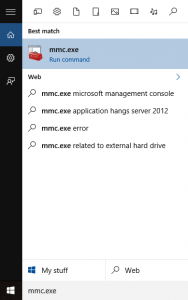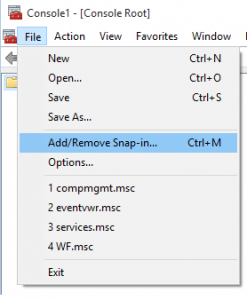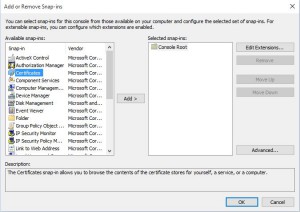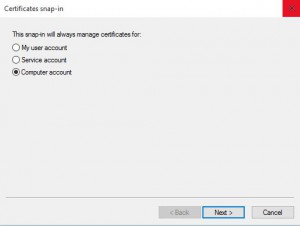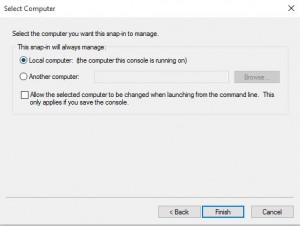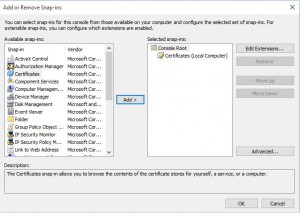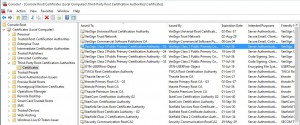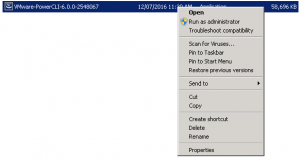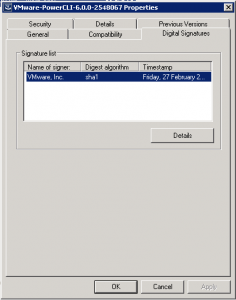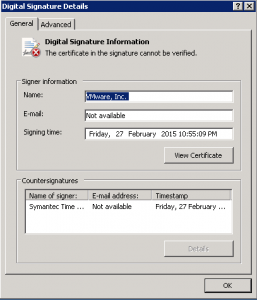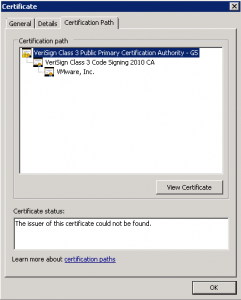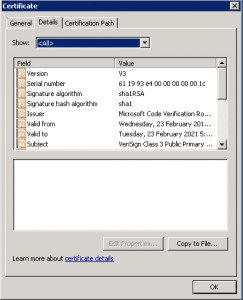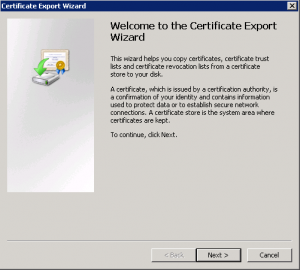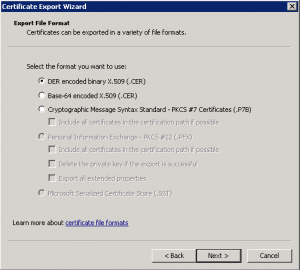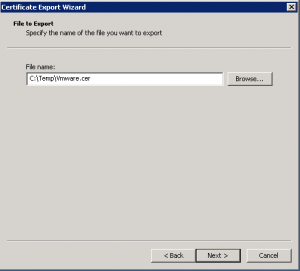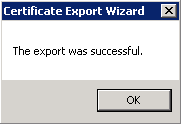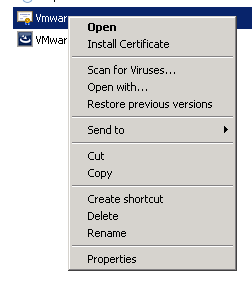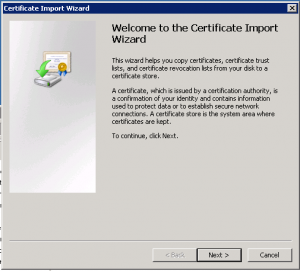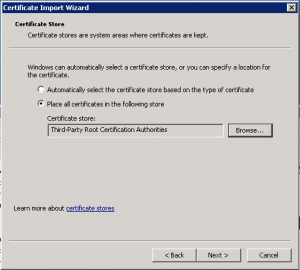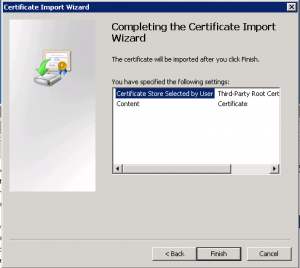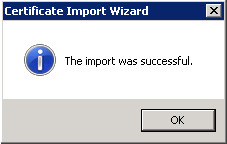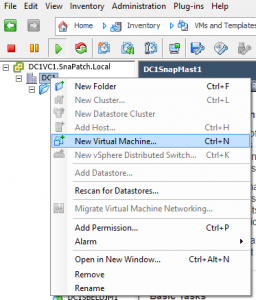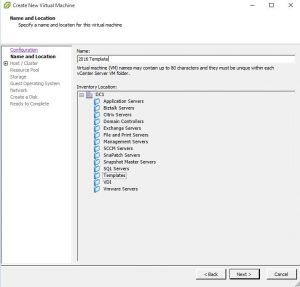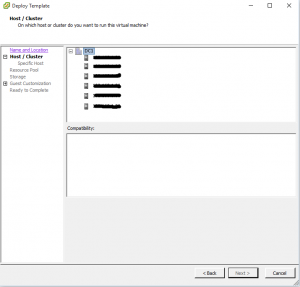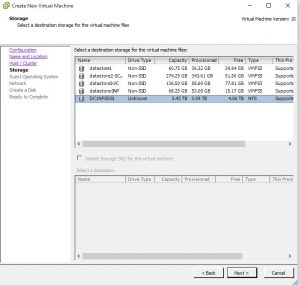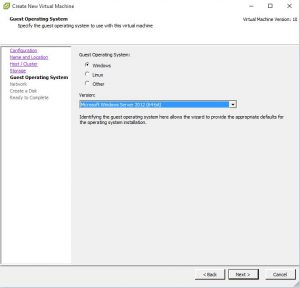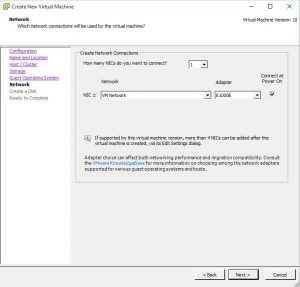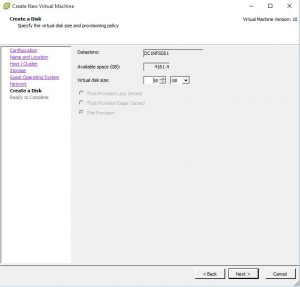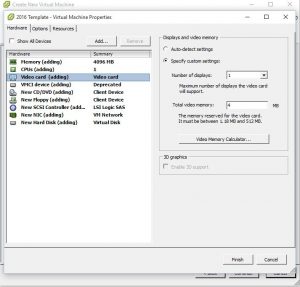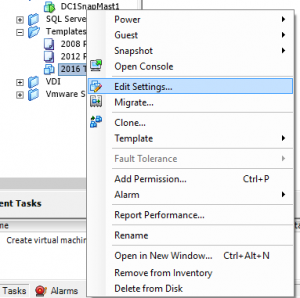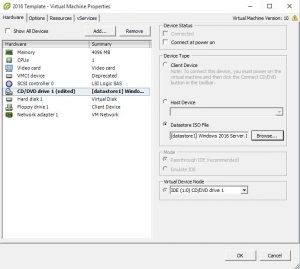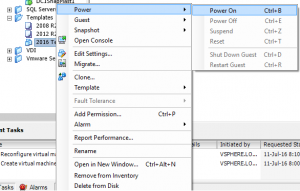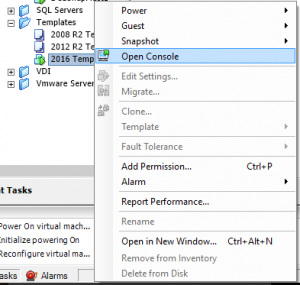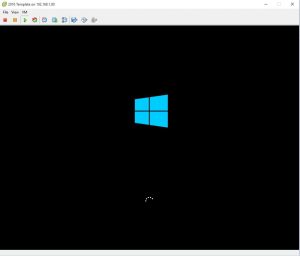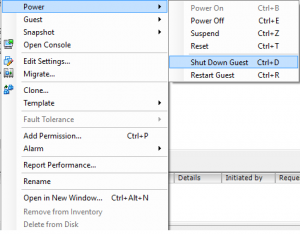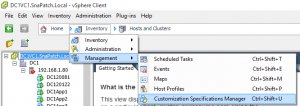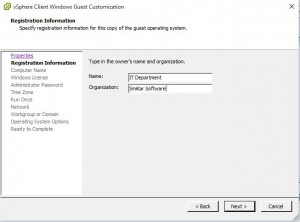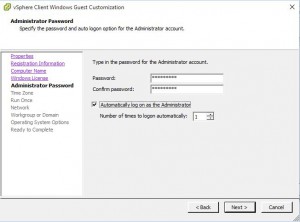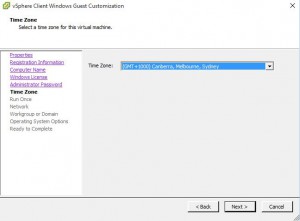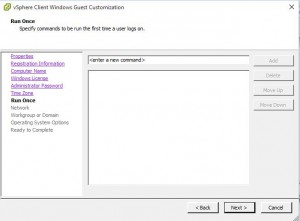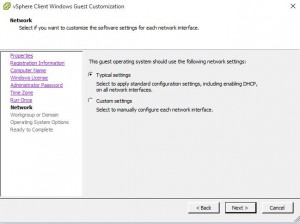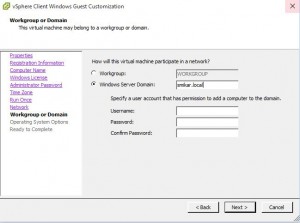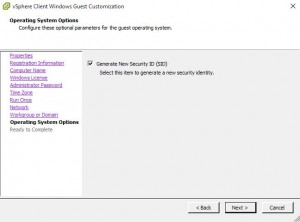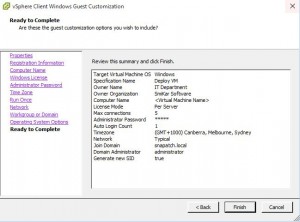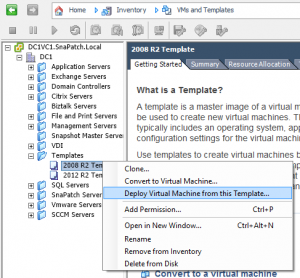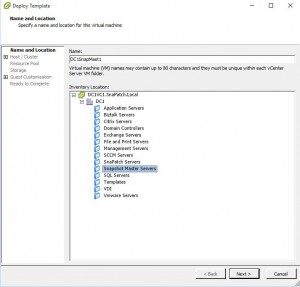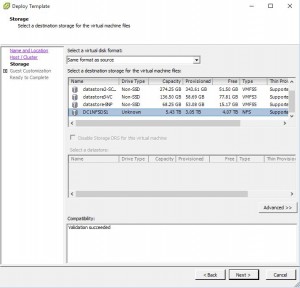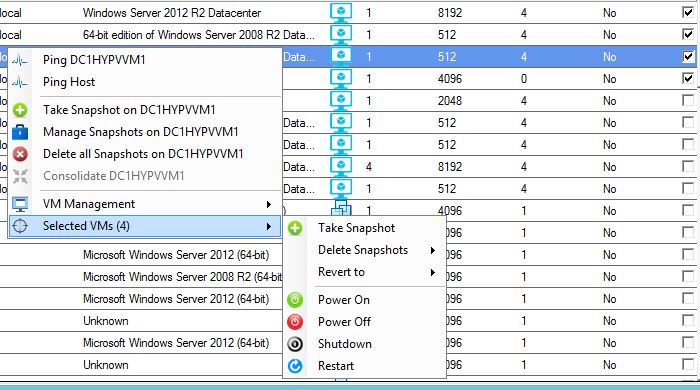
by Mark | Jul 12, 2016 | Errors, Fixes, How To, VMWare
VMWare PowerCLI Installation Failed
If you are installing VMWare’s PowerCLI for remote administration of your VMWare farm, or for SnaPatch or Snapshot Master you may at times receive the following error, “Setup has detected that the installation package is corrupted. Please be aware that this installer may have been tampered with.” One of the possible causes for this is that the root certificate for VeriSign isnt installed on your computer. There are a few ways to fix this issue, one is to download the root certificate from VeriSign themselves and then to install it to the local computer account under Third-Party Root Certification Authorities-Certificates, or to export it from the VMWare PowerCLI installation package.
VMWare PowerCLI setup error
These screenshots show the error you would receive while trying to install the VMWare PowerCLI installer.


How to Manually install the root certificate
First off we will see if the root certificate is in fact already installed or not. From a command prompt type mmc.exe to open up the Microsoft Management Console.

Now go to File, then Add/Remove Snap-in

Next we have to choose the Certificates addin. Highlight Certificates then click on Add.

You will now need to select Computer Account and then click Next.

Choose Local Computer for the location that this snap-in will manage then click Next.

Now click OK and the Certificates Snap-in will be available.

Expand Certificates, then Third-Party Root Certification Authorities and finally Certificates. You will now need to look for the Root Certificate, VeriSign Class 3 Public Primary Certification Authority – G5. In this example you can see that the certificate is installed. If it isnt installed you can download and install the certificate to the shown location. If you cannot download the root certificate it is possible to import the certificate from the VMWare PowerCLI installation package, as shown in further steps.

How to import the certificate from the VMWare package
Now you will need to export the Root Certificate from the VMWare PowerCLI installation package. To do so, locate the EXE file and right click it then choose properties.

Change the tab to Digital Signatures then click Details.

As you can see in this example, “the certificate in the signature cannot be verified”. Click View Certificate to proceed.

Change to the Certification Path tab and make sure you select the top of the certification path. In this example, you can see it highlighted as VeriSign Class 3 Public Primary Certification Authority – G5. Once selected click View Certificate.

Again, in the next window go to the Details tab then click Copy to File.

The Certificate Export Wizard starts next. Click on Next to proceed with the Wizard.

Leave the Format as DER and then click on Next.

Choose the location and filename where you want to save the exported certificate and then click Next.


You can now click Finished and the Certificate Export Wizard will then close.

Next we need to import the VeriSign Root Certificate to the correct location. Right click the exported certificate and select Install Certificate.

The Certificate Import Wizard now starts. Click Next.

Select Place all certificates in the following store and then choose Third-Party Root Certification Authorities. Click Next when ready to do so.

Now click Finish.

The Root Certificate from VeriSign should now have installed in to the correct location and you can then restart the installation of VMWare PowerCLI.


by Mark | Jul 11, 2016 | How To, VMWare
How to Create a VMWare Template for Deployment
So you are deploying Servers regularly and ask becoming sick of completing this the manual way. Well to create a template for quick deployment is relatively easy, just follow the steps in this blog post and you will be deploying VMs in no time.
There are two methods to create a VMWare template, Clone to Template or Convert to Template.
Clone to Template
Clone to Template does exactly that. It creates an exact copy of the VM and leaves the original VM you choose intact. Choosing this option allows you to change the format of the Virtual Disk to either Thick or Thin Provisioning. Thin Provisioning the disk will allow the VM to use only the disk space it requires, and grow with time. Thick Provisioning the VM will use the amount of Disk Space you specify. Creating a Clone to Template VMWare duplicates the Virtual Disks and the .VMX file that holds all the configuration settings for that Virtual Machine.
Convert to Template is the other possible method available to you. (This is what I use in this example). It is much faster than using Clone to Template as it is not required to duplicate the source Virtual Machine disks. What it does is changes this VM to a Template format.
Once you have finished creating a VMWare Template following this post, Click this link to see how to make a VM automatically join a Windows Domain.
Convert to Template
Convert to Template is the other possible method available to you. (This is what I use in this example). It is much faster than using Clone to Template as it is not required to duplicate the source Virtual Machine disks. What it does is changes this VM to a Template format.
Once you have finished creating a VMWare Template following this post, Click this link to see how to make a VM automatically join a Windows Domain.
VMWare Template FAQs
What is a VMWare template?
VMWare template is a pre-configured virtual machine that can be easily duplicated and deployed.
Why should I create a VMWare template?
Creating a VMWare template can save you time and effort when deploying multiple virtual machines with the same configuration.
What are the two methods for creating a VMWare template?
The two methods are Clone to Template and Convert to Template.
What is the difference between Clone to Template and Convert to Template?
Clone to Template creates an exact copy of the virtual machine, while Convert to Template changes the virtual machine to a template format.
Which method is faster, Clone to Template or Convert to Template?
Convert to Template is generally faster as it doesn’t require duplicating the source virtual machine disks.
What are the steps to create a VMWare template?
The steps are: log in to your VMWare console, create a new virtual machine, specify the name, host/cluster, storage, operating system, network, and disk settings, install the operating system, shut down the virtual machine, and finally convert it to a template.
How can I customize the hardware settings of my VMWare template?
You can customize the hardware settings by selecting “Edit Settings” on the virtual machine and changing the appropriate settings.
How can I deploy a virtual machine using my VMWare template?
To deploy a virtual machine using your VMWare template, right-click the template, choose “New Virtual Machine,” and follow the prompts.
Can I change the configuration of a VMWare template after it has been created?
Yes, you can edit the settings of a VMWare template by converting it back to a virtual machine, making the necessary changes, and then converting it back to a template.
Are there any considerations to keep in mind when creating a VMWare template?
Yes, it’s important to ensure that the operating system is properly licensed and that any necessary updates and patches are applied before creating the template. It’s also important to follow best practices for securing virtual machines.
Create a VMware Template in the VMware Console
Login to your VMWare Console
Log in to your VMWare console and then Right Click your datacentre and choose New Virtual Machine.

VMware Templation Creation
Now give the VM a name. As this is going to be a template for future deployment of Windows Server 2016, I have chosen 2016 Template to make it easier to see which Operating System this template will install.

VMware Host / Cluster Tab
Chose the Host or Cluster you want the VM to be deployed to then click on Next.

VMware Host / Cluster Tab
Chose the Host or Cluster you want the VM to be deployed to then click on Next.

VMware Storage Tab
Next you specify the storage location for the VM to reside on. Select the appropriate VM datastore and then click on Next.

VMware Guest Operating System Tab
Choose the Operating System you want to install on the VM and click Next.

VMware Template Creation Network TAB
Select the VMware network you want this VM to communicate on and click Next.

VMware Template Disk Creation
Specify the size of the Operating System Disk then click Next.

VMware Template Completion
Confirm the settings are correct and click on Finish. In this example I checked the checkbox for Edit the virtual machine settings before completion to show you what hardware settings you can change. Click Finish when ready.

VMware Template Settings
Now the VM is ready to install the operating system, you will have to attach an ISO file for the installation. Find the VM then Right Click the Virtual Machine and select Edit Settings.

Edit VMware VM Settings
Select CD/DVD drive then Datastore ISO file. Browse to the datastore location of your Operating System installation media and select the appropriate media then click on OK. You can also change other hardware settings for this template.

VMware Template – Power On
Now we need to install the Operating System so that we can easily redeploy this VM as a template. Right Click the VM and choose Power On.

VMware Template – Open the VM Console
Right Click the VM again and choose Open Console so that you can install the Operating System.

Install the VM Operating System
Next will require you to install the Operating System. Please note that if you are going to change this to a VM Template, do not join your Windows Domain.

Shutdown the VM
Once the machine has logged in to Windows for the first time, shut the machine down.

Create a VMWare Template
Once the installation of the Operating System has completed and the Virtual Machine is powered off we can now create a VMWare Template. Right Click the Virtual Machine, go to Template, then Convert to Template. This will now change the Virtual Machine and convert it to a ready to deploy Template for quick and easy future deployment.

Creating a VMWare template can save you time and effort when deploying servers regularly. By following the steps in this post, you can create a VMWare template using the Convert to Template method. Remember to shut down the VM after the first Windows login and then convert it to a template. With a VMWare template, you can deploy VMs in no time and focus on other tasks that need your attention.

by Mark | Jul 11, 2016 | How To, VMWare
Virtual machines have become an essential part of modern IT infrastructure, as they allow administrators to create and manage multiple computing environments on a single physical machine. This can be incredibly useful for tasks such as testing, development, and training. When deploying a virtual machine, it is often necessary to perform customizations, such as joining the machine to a domain, setting network configurations, and specifying local administrator password, among others. This article provides a step-by-step guide to deploying a virtual machine and joining it to a domain automatically using VMWare Customization script. The article covers each step of the customisation process, including how to specify domain information, set the computer name, configure the Windows license, set the time zone, and much more. This guide is intended for administrators who want to automate the process of deploying virtual machines and joining them to a domain, and it provides detailed, actionable instructions for achieving this goal.
How to Deploy a VM and join a Domain Automatically
If you ever have the need to deploy a Virtual Machine and have some customisations for deployment (i.e. Network Settings or have the automatically join a domain), this post will show you how to.
The VMWare Customistation script will allow you to specify;
- Domain to join automatically
- Network settings
- Registration Settings
- Computer Name
- Windows License
- Time Zone
- Local Administrator Password
- Operating System Settings.
Assuming here (I know, never assume anything) that you have already created a VM template to deploy (If you havent already created one, click the link to see a blog post on How to Create a VMWare Template) follow these steps to create your very own VMWare Customisation Script.
VMWare vCentre Console
1. Log in to your Vmware vCentre Console. Choose Home, then Inventory, Management and finally Customistation Specifications Manager.

VM Properties Tab
2. The VMware Customisation Wizard starts. Choose the Operating System and provide a Name and Description then click Next.

Registration Information Tab
3. Provide the Name and Organisation that the server will belong to then click Next.

Virtual Machine Computer Name Tab
4. Next we need to configure the name of the VM. In this example, I am choosing to use the Virtual Machine name as this will match against Vmware and Active Directory making it easier to identify. Click Next when ready to proceed.

Windows License Tab
5. If you have a product key you can enter it here. As I am using KMS in my domain for Windows Licensing, I chose to leave this blank. Again, click Next when ready.

Administrator Password Tab
6. Add the Administrator password and how many times you wish for the Administrator account to login. This is used for the Local Administrator account not a Domain Administrator. Click Next.

Time Zone Tab
7. Choose the Time Zone relevant to your environment then click Next.

Run Once Tab
8. If you wish for any commands to run (ie scripts to customise your server further) you can enter them here. I havent any for this Customisation so have left this as black. Click Next.

Network Tab
9. For the Network portion of the wizard, you can choose custom settings if required (i.e DNS server and IP address settings). Im using the typical settings (i.e. DHCP). Click Next when you have chosen the settings you require.

Workgroup or Domain Options Tab
10. Now the important part. If you want the VM to deploy and then to automatically join your Windows domain you will need to add the Domain Name, Administrator Account and Password. Click Next when ready.

Operating System Options Tab
11. Allow the VMWare customisation script to Generate New Security ID (SID) then click Next.

Ready to Complete Tab
12. Finally, check the settings are correct then click Finish to proceed.

Deploy Virtual Machine from this Template.
13. Now hopefully everything went well and you are ready to start using the VMWare Customisation Script you created and deploy your first VM with these settings. Choose the template you wish to apply this customisation to, Right Click and choose Deploy Virtual Machine from this Template.

Name and Location Tab
14.Give the VM a name and then the Inventory Location the machine will reside in and then click Next.

Host and Cluster Tab
15. Choose a Host or Cluster for the VM to run on then click Next.

Storage Tab
16. Next you choose the storage location that the VM will use to store its files (VMDK). Select the storage destination then click Next.

Guest Customisation Tab
17. This is another important part of the VM deployment process. You can choose not to customise but since this blog post is about using the customisation we created earlier, choose Customise using an existing customisation specification. Select the VMWare customisation you created then click Next.

Ready to Complete Tab
18. Check the settings that are specified in this screen are what you have selected and when confirmed click Next. You can also edit the Virtual Machines hardware if you wish to do so (i.e. set CPU, Ram, Disk Space etc)

Finished 🙂
19. You should now be able to see that your new Virtual Machine is deploying using the VMWare Customisation Script you created. It will now automatically join the Windows Domain and be ready to use once the installation has completed.


by Mark | Feb 27, 2016 | How To, VMWare
As a system administrator, you might face situations where a Domain Controller (DC) in your network fails due to hardware issues or software corruption. In such cases, restoring the DC from a snapshot can be a lifesaver. A snapshot is an image of the system’s state at a particular point in time, and restoring from it can bring back the system to that state. In this article, we will discuss how to restore a Domain Controller from a snapshot, step by step.
Understanding the Importance of Domain Controllers
Before we jump into the process of restoring a Domain Controller from a snapshot, let’s first understand why DCs are crucial for a network. In simple words, a Domain Controller is a server that manages network security and enables users to access shared resources, such as printers and files, on the network. It is the backbone of the Active Directory (AD) infrastructure, which is responsible for authentication and authorization in a Windows environment.
Reverting a snapshot of an active Domain Controller can be a risky and problematic issue.
If you are considering using this procedure it should be your very LAST option. This is not a supported Microsoft procedure and use of it could cause fatal issues to Active Directory.
Reassess your environment and take the proper steps to ensure this recovery model doesn’t have to be used again.
Use at your own risk!
What are the risks with doing this?
The risks of reverting a snapshot of a Domain Controller are significant and can have severe consequences for an organization’s Active Directory infrastructure. Some of the potential risks include:
-
Data loss: Reverting a snapshot of an Active Domain Controller can result in data loss, as the snapshot may not contain all of the latest changes to the Active Directory.
-
Active Directory corruption: The Active Directory database may become corrupted during the snapshot revert process, leading to issues with authentication, authorization, and other critical services.
-
Replication problems: The snapshot revert process can cause problems with replication between Domain Controllers, leading to inconsistencies in the Active Directory data across different servers.
-
Service disruptions: The snapshot revert process can result in disruptions to critical services, such as DNS, that depend on the Active Directory.
-
Security risks: The snapshot revert process can result in security risks, as it may expose sensitive data or compromise the security of the Active Directory infrastructure.
It is important to carefully consider the potential risks and consequences before attempting to revert a snapshot of an Active Domain Controller. It is recommended to only use this procedure as a last resort, and to thoroughly research and understand the potential risks before proceeding.
Preparing for the Restoration
Before you start the restoration process, you need to ensure that you have a snapshot of the Domain Controller that you want to restore. It is essential to note that restoring a DC from a snapshot is a risky process and should be performed only when no other options are available. Moreover, you must have a proper backup and recovery plan in place to avoid any data loss during the restoration.
Steps to revert a Domain Controller Snapshot
1) Revert to your last known good snapshot
2) Disable your network card so that it is unable to talk to the network
3) Note the value of your Invocation Id
- From a command prompt run the following command
- Repadmin /showrepl
4) Reboot your Domain Controller and make sure you boot into Directory Services Restore Mode
5) Stop the NTFRS service
6) From a command prompt start Regedit
- Drill down to HKLM – System – CurrentControlSet – Services – NTDS – Parameters
- Modify the RegKey “Database restored from backup” = 1
- If this RegKey doesn’t exist create one as a DWORD and set to a 1
- If the RegKey DSA Previous Restore Count exists in the same path, note its value. Upon reboot it should increment by one. If it didn’t exist it should be created and it should be set to a value of 1.
- Drill down to HKLM – SYSTEM – CurrentControlSet – Services – NtFrs – Parameters – Backup – Restore – Process
- Modify the RegKey BurFlags to D2
7) Reboot the server
8) Log back in to the Domain Controller
- Verify that the Invocation Id has changed
- In the Event Log look for the Event Id 1109 (AD restored from backup)
9) If both events have occurred in bullet point 8 then, enable the network card again
Best Practices for Restoring a Domain Controller from a Snapshot
Here are some best practices that you should follow while restoring a Domain Controller from a snapshot:
Best Practice 1: Ensure the Snapshot is Consistent
Make sure that the snapshot is consistent and the system is shut down gracefully before taking the snapshot.
Best Practice 2: Test the Snapshot
Before performing the actual restoration, test the snapshot on a test environment to ensure that the restoration process goes smoothly.
Best Practice 3: Have a Backup Plan in Place
Always have a backup plan in place and test it regularly to ensure that it is effective.
Best Practice 4: Monitor the DC after Restoration
Monitor the Domain Controller closely after the restoration to ensure that it is functioning correctly.
Conclusion
Restoring a Domain Controller from a snapshot can be a lifesaver in critical situations. However, it is a risky process and should be performed only when no other options are available. It is essential to have a proper backup and recovery plan in place and follow the best practices while restoring a Domain Controller

by Mark | Oct 9, 2015 | VMWare
What is VM Snapshot Consolidation and Why it is Important?
Virtual machine snapshots have become an essential tool for managing virtual machines, but they can also present some challenges. VM Snapshot Consolidation is a process that helps address these challenges by merging multiple snapshots into a single file, reducing disk space consumption, and improving performance.
In this article, we’ll dive into the details of VM Snapshot Consolidation and explore why it’s an important part of virtual machine management.
Introduction to VM Snapshot Consolidation
VM Snapshot Consolidation is a process that is used to consolidate multiple snapshots of a virtual machine into a single snapshot file. This process helps reduce the number of snapshots stored on a virtual machine, freeing up disk space and improving performance.
Snapshots are used to capture the state of a virtual machine at a specific point in time. They can be used for backup and recovery, testing, and other purposes. However, snapshots can quickly consume a large amount of disk space, especially if multiple snapshots are taken over time.
The Benefits of VM Snapshot Consolidation
There are several benefits of consolidating snapshots in a virtual machine:
- Reduced disk space consumption: Multiple snapshots can consume a significant amount of disk space, and the more snapshots you take, the more disk space they will consume. By consolidating snapshots, you can reduce the amount of disk space they consume and free up valuable storage resources.
- Improved performance: As snapshots accumulate, they can negatively impact the performance of a virtual machine. By consolidating snapshots, you can reduce the number of snapshots stored and improve the overall performance of the virtual machine.
- Easier management: Managing multiple snapshots can be a challenge, especially if you are dealing with a large number of virtual machines. By consolidating snapshots, you can simplify the management process and make it easier to keep track of snapshots and the state of virtual machines.
- Reduced risk of data loss: If a virtual machine has a large number of snapshots, the risk of data loss increases. By consolidating snapshots, you can reduce the risk of data loss and ensure that the virtual machine is protected in the event of a failure or disaster.

How to Consolidate Snapshots in a Virtual Machine
The process of consolidating snapshots in a virtual machine will vary depending on the virtualization platform you are using. However, the basic steps are typically as follows:
- Identify the snapshots you want to consolidate.
- Power off the virtual machine.
- Open the virtual machine’s configuration settings.
- Choose the option to consolidate snapshots.
- Wait for the consolidation process to complete.
- Power on the virtual machine.
The consolidation process may take some time to complete, depending on the number of snapshots and the size of the virtual machine. It is important to be patient and let the consolidation process complete before attempting to power on the virtual machine.
Alternatively, rather than using the VMware console, open SnapShot Master, highlight the VMs you want to perform the task to, right click and choose consolidate. SnapShot Master will automatically consolidate all those VM snapshots

VM Snapshot Consilidation FAQ
- What is the difference between a snapshot and a backup?
A snapshot is a capture of the state of a virtual machine at a specific point in time, while a backup is a copy of the entire virtual machine or data stored on the virtual machine. Snapshots are often used for short-term backup and recovery, while backups are used for long-term data protection.
- Can snapshots be used as a replacement for backups?
No, snapshots should not be used as a replacement for backups. While
snapshots are useful for capturing the state of a virtual machine at a specific point in time, they do not provide the same level of protection as a full backup. Snapshots can be lost or corrupted if there is a failure or disaster, whereas backups are stored separately from the virtual machine and can be used to restore the virtual machine in the event of a failure or disaster.
- How often should I consolidate snapshots in a virtual machine?
The frequency with which you consolidate snapshots in a virtual machine will depend on several factors, including the number of snapshots taken, the size of the virtual machine, and the amount of disk space available. It is a good idea to consolidate snapshots on a regular basis to ensure that they do not consume too much disk space and impact the performance of the virtual machine.
- What happens to the snapshots that are consolidated?
When snapshots are consolidated, they are merged into a single snapshot file. The original snapshots are deleted, and the consolidated snapshot file becomes the new current state of the virtual machine.
Consolidate your VM Snapshots
Snapshot consolidation is useful when snapshot disks fail to compact after a Delete or Delete all operation or if the disk did not consolidate. This might happen, for example, if you delete a snapshot but its associated disk does not commit back to the base disk.
The snapshot Consolidation searches for hierarchies or delta disks to combine without violating data dependency. After consolidation, redundant disks are removed, which improves virtual machine performance and saves storage space.
When initiating a snapshot delete action, the delta disk changes are then written to the base or parent VMDK file and the snapshot is deleted. With vSphere 5, a new option called consolidate was introduced. The purpose of consolidate is if the snapshot deletion process was not successful. In the past there were incidents where a user would initiate a snapshot deletion thinking the snapshot got deleted, yet to find out later that that’s not the case. With the consolidation option, when you initiate a snapshot deletion, if the snapshot fails to delete, the VM will then generate a warning letting you know that a consolidation is required. You would then run the snapshot consolidation option and the snapshot would get committed.
Be warned however, that this can create increased load on the VM and would be best performed outside of business hours
VM Snapshots Consolidation FAQs
What is VM Snapshot Consolidation?
VM Snapshot Consolidation is a process that merges multiple snapshots of a virtual machine into a single snapshot file. This process helps reduce disk space consumption and improve virtual machine performance.
Why is VM Snapshot Consolidation important?
Virtual machine snapshots can quickly consume a large amount of disk space, especially if multiple snapshots are taken over time. Consolidating snapshots helps free up valuable storage resources and reduces the risk of data loss.
How does VM Snapshot Consolidation improve virtual machine performance?
As snapshots accumulate, they can negatively impact the performance of a virtual machine. By consolidating snapshots, you can reduce the number of snapshots stored and improve the overall performance of the virtual machine.
How often should I consolidate snapshots in a virtual machine?
The frequency with which you should consolidate snapshots will depend on several factors, including the number of snapshots taken, the size of the virtual machine, and the amount of disk space available. It is a good idea to consolidate snapshots on a regular basis to ensure that they do not consume too much disk space and impact the performance of the virtual machine.
What is the difference between a snapshot and a backup?
A snapshot is a capture of the state of a virtual machine at a specific point in time, while a backup is a copy of the entire virtual machine or data stored on the virtual machine. Snapshots are often used for short-term backup and recovery, while backups are used for long-term data protection.
Can snapshots be used as a replacement for backups?
No, snapshots should not be used as a replacement for backups. While snapshots are useful for capturing the state of a virtual machine at a specific point in time, they do not provide the same level of protection as a full backup. Snapshots can be lost or corrupted if there is a failure or disaster, whereas backups are stored separately from the virtual machine and can be used to restore the virtual machine in the event of a failure or disaster.
What happens to the snapshots that are consolidated?
When snapshots are consolidated, they are merged into a single snapshot file. The original snapshots are deleted, and the consolidated snapshot file becomes the new current state of the virtual machine



